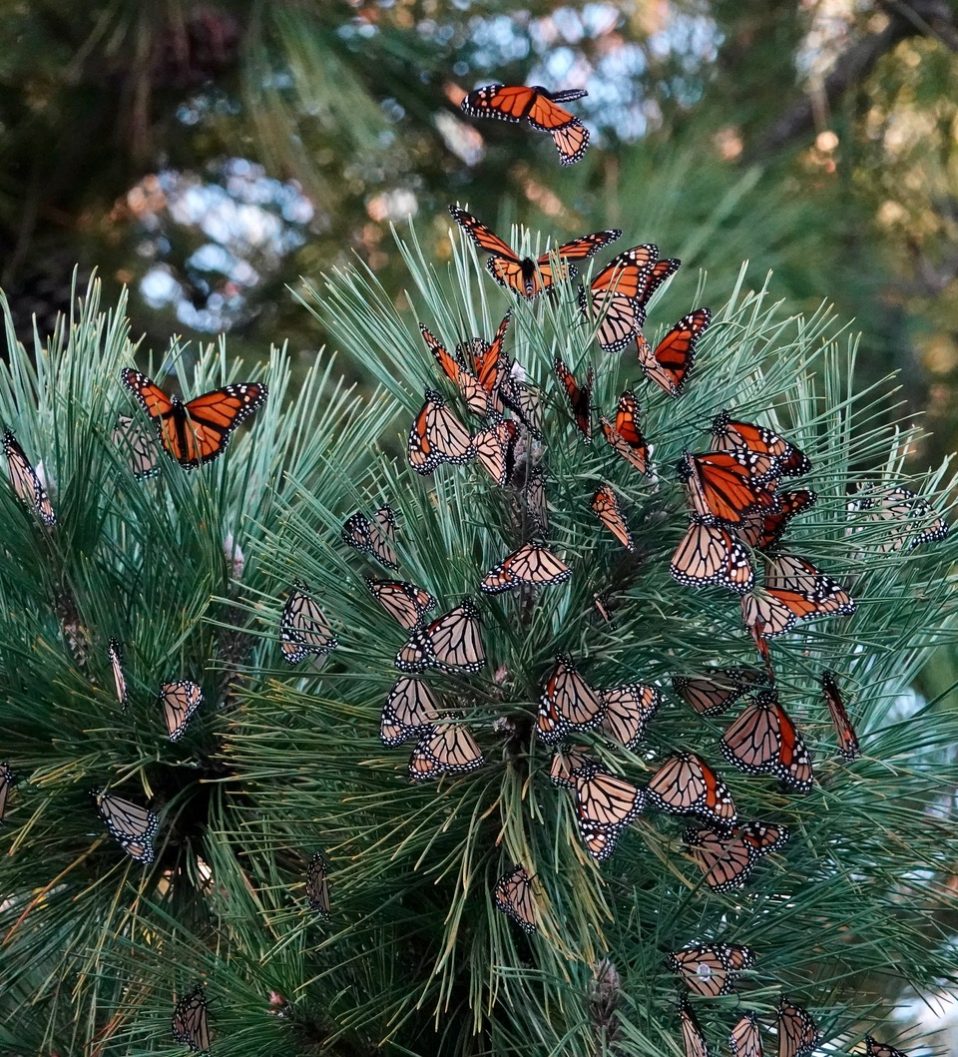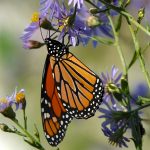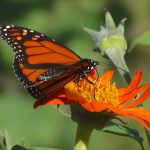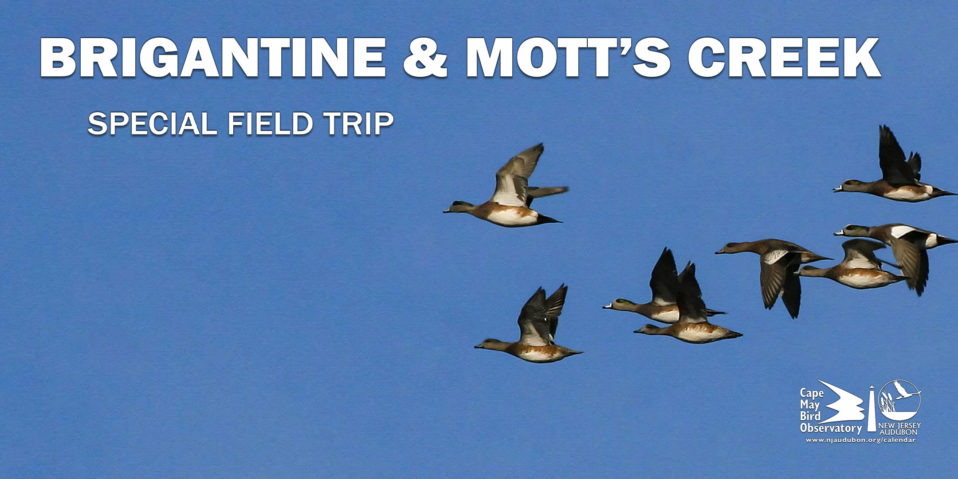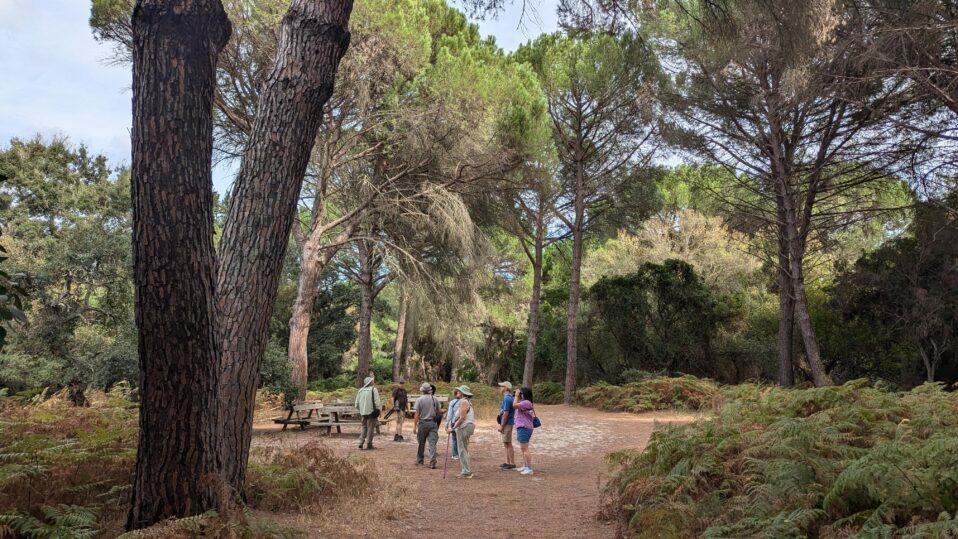Cape May Point turned into a swirling snow globe of monarchs on October 22nd. For nearly three hours, a steady stream of thousands of monarch butterflies headed west along the dunes on Cape May Point. Monarch numbers had built up over the course of a few days prior to the big flight, congregating at various roost sites on the point.
When monarchs arrive to the tip of the Cape May Peninsula and realize they must cross water to continue their journey south, they often opt to stay put, bask in some sunlight, and fuel up on nectar from flowers until a day with the right weather conditions makes the journey a bit easier. Thanks to the protected native habitat along Cape May Point’s dunes and the wonderful residents who keep butterfly gardens with fall flowering plants, these monarchs have a good supply of nectar during their stay. However, we did not expect the massive influx of new monarchs that came in from the north and which swept through on the 22nd, joining those already on Cape May Point to form one of the largest flights of recent years. It was a spectacular sight to behold.
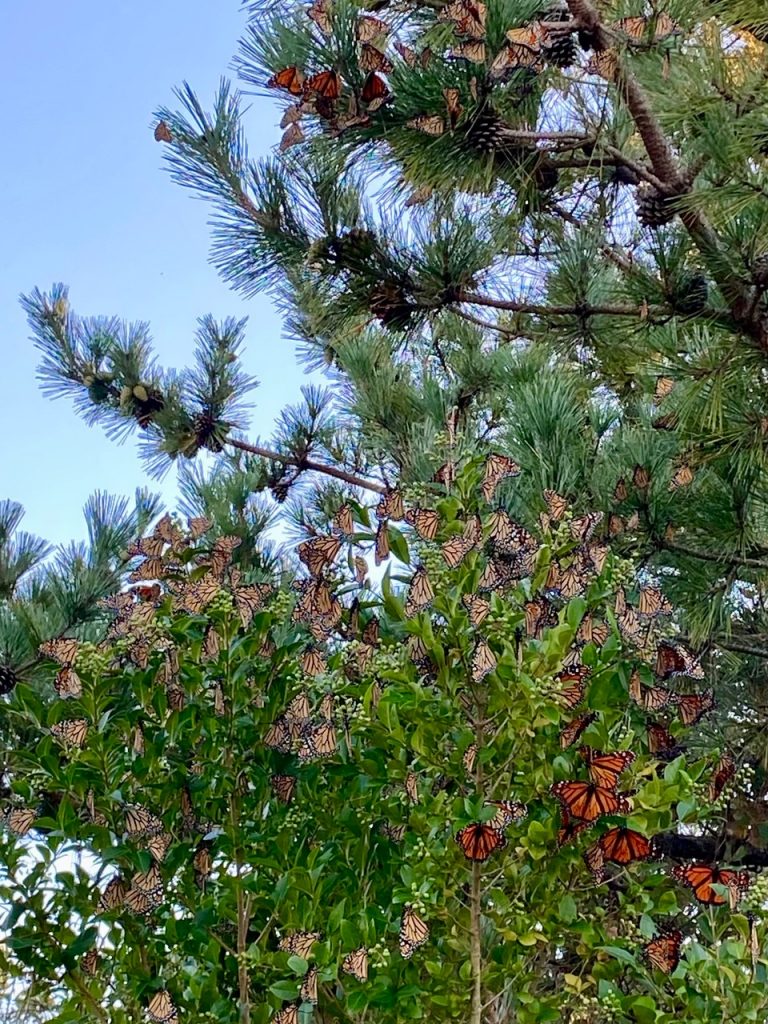
We look forward to seeing what monarch numbers will be like in the coming weeks, even though we’ve seen lower numbers these past few days and it is likely that most have already passed through. While we are sad to see them go, we know that the monarchs still have over 2,000 miles left on their journey to their overwintering sites in Mexico. We wish them luck, and we are excited at the prospect of our friends to the south reporting monarchs tagged on our project! If you see a monarch, remember to check their hind wings for a small, circular adhesive sticker. Each tag has a unique 4-letter, 3-number code. If you happen to see a monarch with a tag, the easiest way to read the code on the tag is to try to snap a photo and zoom in on the butterfly’s wing. Then report the code online at mwtag.org. Our fastest monarch ever recorded flew 558 miles from Cape May Point to Georgia in just 3 days, and we are proud to say that we’ve now also had nearly 100 tagged recoveries in Mexico.
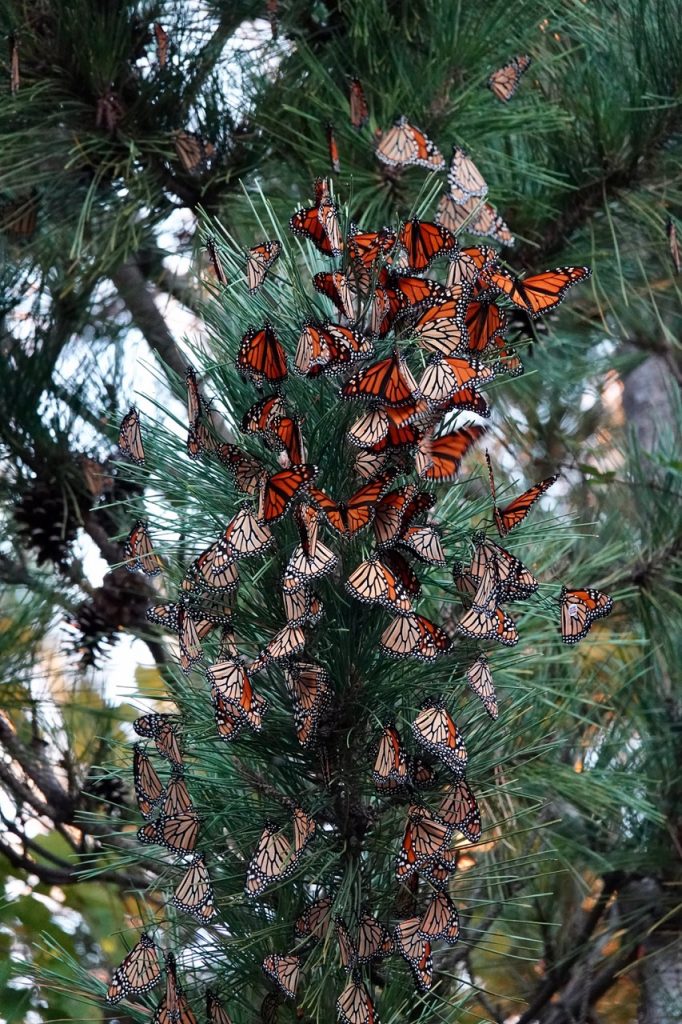
If you don’t already, follow us on Facebook and Instagram @capemaymonarchs, and we will keep you posted on all things monarch as much as we can.
-Kyra Madunich
photos from Mark Garland
Monarch butterflies are the only butterfly species that completes a two-way migration, traveling from Mexico to as far north as Canada. Imagine an insect weighing less than a paper clip setting out on this amazing and mysterious journey of over 2500 miles, where danger lurks throughout!
Loss of habitat, extreme weather, predators, and toxic pesticides have all taken a toll on fragile populations and the future of Monarchs is at risk. You can make a difference and save Monarch butterflies for future generations.
When you Adopt a Monarch, you support New Jersey Audubon’s efforts to protect this iconic species. Your tax-deductible gift will fund our Monarch Monitoring Project, tagging and monitoring these butterflies for more than three decades, while teaching people how to protect them.




